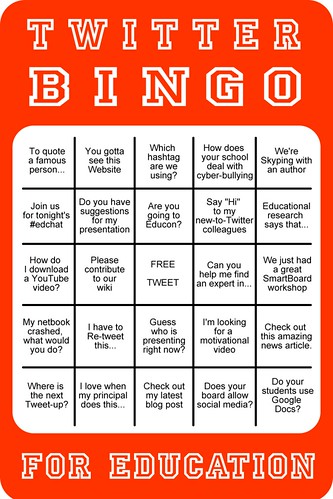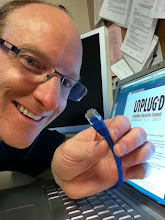Yesterday, I had the opportunity to lead the academic staff of
Regina Mundi College, through a morning of learning, reflecting and designing. With the staff still getting to know me through the first ten weeks of school, it was a unique opportunity to revel in my passions for emerging technologies along with local colleagues.
The Lesson I began the workshop by highlighting
Ten Trends sure to affect teaching and learning in the years to come:
Peppered throughout the morning, were unexpected bonuses that I like to call '
soft returns': resources that can immediately impact classroom teaching & learning. Tools you might take for granted such as
Wordle,
WolframAlpha or
Mr. Robbo's blog, are a few of the examples that rewarded participants for engaging with the 'formal lesson'.
The Culminating Task:
To demonstrate an understanding of highlighted emerging trends, teachers were asked to consider the following questions:
Which trends are most likely to impact your classroom?
How will your classroom change?
What tools will you need to address these trends?
What will you need to learn?
What will you need to un-learn?Rather than answering the questions in a journal, or writing a test, teachers were grouped and tasked with designing a '
Classroom of Tomorrow'. To highlight the potential of collaborative design tasks, members of each group were invited to take on roles with entry points differentiated to meet the needs of a diverse 'classroom':
Team Leader: ensure all have input
Architect: sketch the classroom
P.R. Specialist: communicate design decisions
Espionage Expert: sample the ideas of other teams
C.F.O.: calculate a budget for proposed design
Timer: reinforce timelines for design and presentation
Showing What You Know:
Participants came to realize that it was possible to demonstrate an understanding of the 'course content' through an engaging activity. If such a task were to be used for assessment purposes, teachers were reminded that each individual should be required to explain the group's design choices, in the context of course expectations. It was also emphasized that any rubric for such a task, might de-emphasize the artistic presentation, in favour of a focus on design thinking and understanding.

The Wrap-up:
In completing this design task, my teaching colleagues transformed into students before my eyes. Letting their true colours show, we staff members unwittingly took on the characteristics of just about every type of student you can imagine. The animation and willing participation of my colleagues was beyond my greatest expectations.
To conclude our morning, an eloquent Ontario teenager, and 'wired' high school student, Patrick Quinton-Brown joined us via
Skype. Patrick is a student trustee with the
Durham District School Board, and Director of Communications with
OSTA-AECO whom I met six days earlier while sitting on a panel at the
People For Education annual conference in Toronto. Having heard him speak about the role technology played in his life, and about how the restrictive classroom environment often impeded his learning, I knew he'd be the perfect guest to wrap our morning.
In arranging an appearance, 'live' from his home school, Patrick was instrumental in helping me to put an exclamation point on the need to transform our classrooms. Indeed, my colleagues were able to experience first-hand, the
Classroom of Tomorrow!
Photo Credit: Rodd Lucier

 The value in any learning network comes from the contributions of many individuals. No one member has ownership of the group, or of the work that's been collaboratively developed. Additionally, it's clear that if any one person fails to add value, then the net results are less striking.
The value in any learning network comes from the contributions of many individuals. No one member has ownership of the group, or of the work that's been collaboratively developed. Additionally, it's clear that if any one person fails to add value, then the net results are less striking.
















